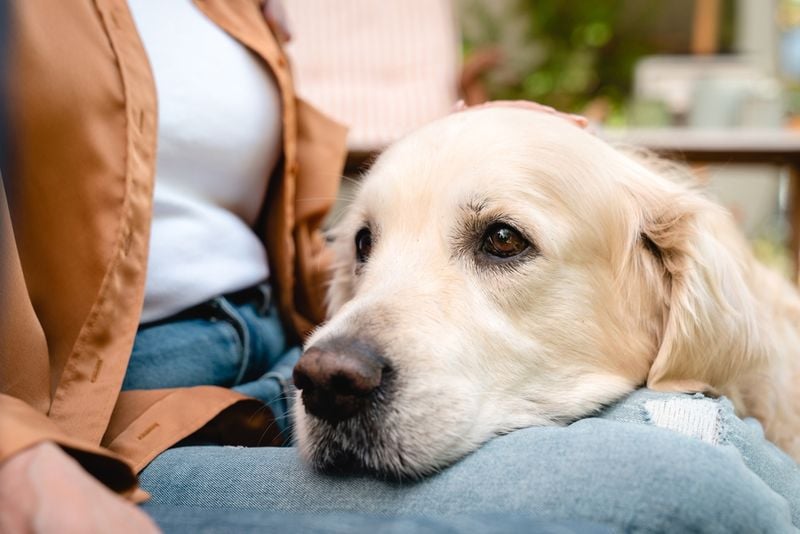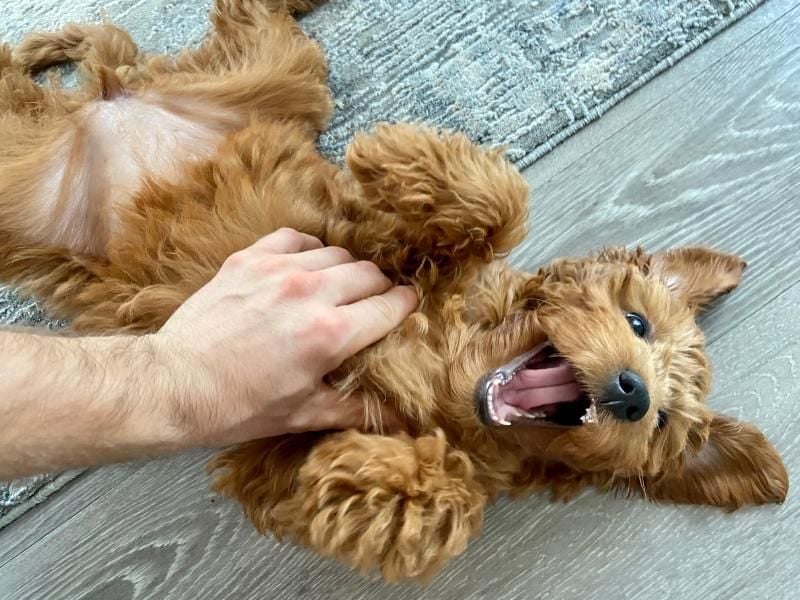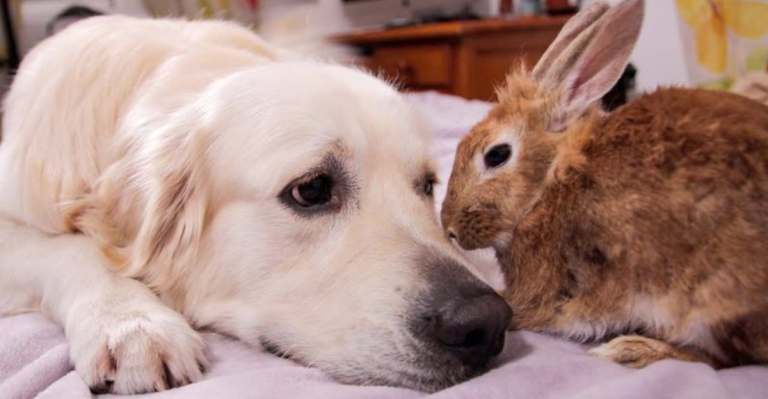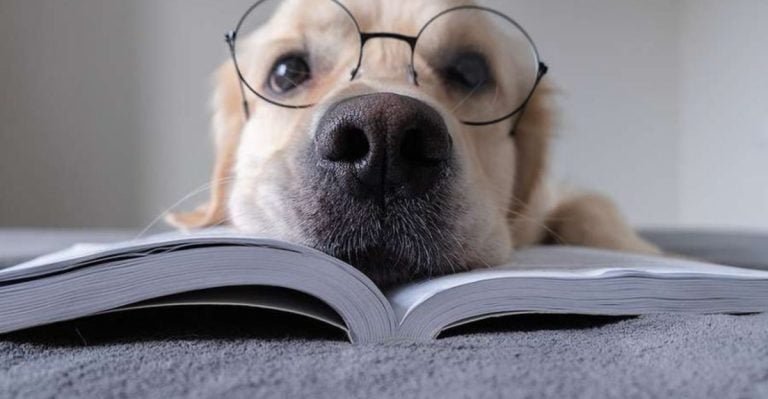15 Wordless Ways Your Dog Says “I’m Here for You”
Dogs have an incredible ability to sense our emotions and offer comfort without saying a word. When we’re feeling down, anxious, or just need some companionship, our furry friends always seem to know exactly what we need. The silent language of canine support speaks volumes through actions, body language, and behaviors that show their unwavering devotion.
1. The Lean-In
Your pup gently presses their body against yours during moments of stress or sadness. This physical connection isn’t random—it’s a deliberate act of solidarity and support.
Dogs instinctively know that physical touch releases oxytocin, the bonding hormone that reduces anxiety. When they lean against you, they’re essentially saying, “I feel your pain, and I’m physically here to help you through it.”
2. Bringing You Their Favorite Toy
Suddenly, your dog appears with their most treasured possession—a slobbery tennis ball or well-loved plush toy. This gesture represents the ultimate sacrifice in a dog’s world.
By offering you their prized possession, they’re attempting to cheer you up with something that brings them joy. It’s their way of saying, “This makes me happy, so maybe it will make you happy too.”
3. The Paw Placement
Your furry friend places a gentle paw on your arm, leg, or hand when you’re upset. This deliberate touch serves as their version of holding your hand during difficult times.
Research shows dogs use their paws specifically for communication and connection. That soft touch is their way of checking in and saying, “I notice something’s wrong, and I want you to know I’m paying attention to your feelings.”
4. Following You Everywhere
Ever notice how your dog becomes your shadow on particularly rough days? That bathroom buddy behavior isn’t coincidence—it’s compassion in action.
Dogs are pack animals who instinctively stay close to vulnerable members. When they sense your emotional distress, their protective instincts kick in. By following you from room to room, they’re essentially providing a canine security detail for your emotional wellbeing.
5. The Watchful Gaze
Those soulful eyes track your movements and expressions with unwavering attention. Your dog’s intense focus isn’t just about hoping for treats—it’s their way of monitoring your emotional state.
Dogs evolved alongside humans for thousands of years, developing an uncanny ability to read our facial expressions. When they maintain eye contact during tough moments, they’re actively checking your emotional temperature and communicating their presence.
6. Resting Their Head on You
That heavy head placed deliberately on your lap isn’t just about getting comfortable. Your dog is creating deliberate physical contact to provide emotional grounding.
The weight of their head creates gentle pressure that naturally calms the nervous system—similar to how weighted blankets work for anxiety. They’re instinctively applying a form of pressure therapy, silently saying, “Feel my presence, let it anchor you through this storm.”
7. The Bedtime Cuddle
Your four-legged friend curls up extra close on nights when your mind races with worries. This isn’t just about seeking warmth—it’s about providing it.
Dogs are remarkably sensitive to changes in your breathing, heartbeat, and sleep patterns. When they detect restlessness or anxiety at bedtime, they position themselves strategically against you. Their rhythmic breathing and warm presence naturally help regulate your nervous system toward calm.
8. The Face Lick
Those unexpected kisses that land on your cheek when tears appear serve a deeper purpose than simple affection. Your dog has detected the chemical change in your tears.
Dogs can smell the different compounds released in emotional tears versus regular eye moisture. Their licking behavior is partly investigative and partly comforting—a canine version of wiping away your tears. It’s their instinctive response to the scent of your sadness.
9. The Happy Dance When You Return
Your dog’s wildly enthusiastic greeting after you’ve been gone just five minutes isn’t just routine—it’s a celebration of your existence. Their whole-body wiggle communicates pure joy at your return.
This exuberant welcome ritual releases endorphins for both of you. Even on your worst days, your dog’s genuine excitement reminds you that to at least one being on this planet, your presence makes everything better. It’s their way of saying, “You matter enormously to me.”
10. Positioning Between You and Danger
Your protective pup subtly places their body between you and perceived threats—whether it’s a stranger at the door or an unusual sound. This positioning isn’t accidental but deeply instinctual.
Dogs have inherited protective behaviors from their wolf ancestors. When they position themselves as a buffer between you and potential danger, they’re fulfilling their self-appointed role as guardian. The message is clear: “I’ll face whatever comes first to keep you safe.”
11. The Gentle Nudge
Your furry companion uses their nose to softly push against your hand or arm when you’ve been still too long in sadness. This nudging behavior serves as a canine intervention.
Dogs naturally disrupt behaviors they sense are unhealthy. When they see you frozen in grief or anxiety, they’ll gently interrupt with a cold nose nudge. It’s their way of saying, “I notice you’re stuck in a difficult moment, and I’m here to help you move through it.”
12. Sighing When They Settle Near You
That audible exhale as your dog flops down beside you communicates more than just physical relaxation. It’s a signal of emotional contentment and security in your presence.
Dogs sigh when they feel completely safe and at ease. When they choose to release that contented sigh next to you, they’re communicating, “I feel perfectly secure in your company.” This mutual exchange of trust forms the foundation of your bond.
13. The Waiting Game
Your loyal companion patiently waits outside the bathroom door or sits attentively during your work calls. This isn’t neediness—it’s steadfast dedication to being available whenever you need them.
Dogs understand the concept of maintaining proximity to their important people. Their patient waiting demonstrates their commitment to being constantly available for emotional support. The unspoken message is powerful: “Take whatever time you need; I’ll be right here when you’re ready.”
14. The Sleep Position Change
Your intuitive dog shifts their sleeping position to maintain contact with you throughout the night, especially when you’re restless. This subtle adjustment shows their ongoing emotional monitoring.
Even while sleeping, dogs remain tuned in to their humans’ emotional states. When they detect your discomfort through scent, movement, or sound changes, they’ll reposition to maintain physical connection. It’s their unconscious way of providing continuous comfort even through dreams.
15. The Belly Exposure
Your dog rolls over, exposing their most vulnerable area—their belly—in moments of your distress. This seemingly random behavior actually demonstrates profound trust and an attempt to model vulnerability.
By showing their belly, dogs place themselves in a physically vulnerable position. This display communicates complete trust in you despite your emotional state. They’re essentially saying, “I feel safe enough with you to be completely defenseless, and you can feel safe with me too.”





















